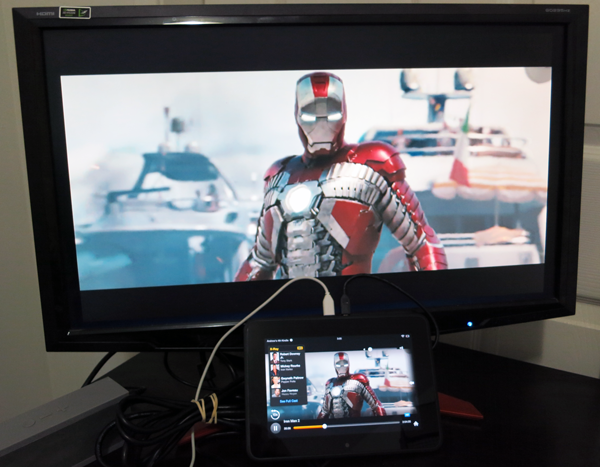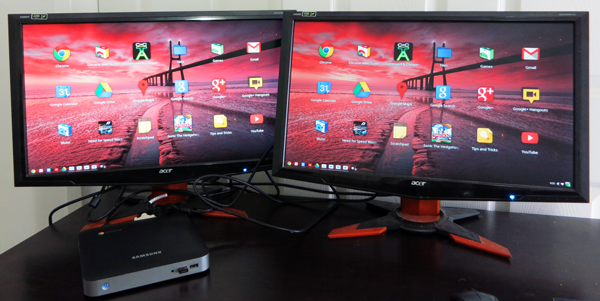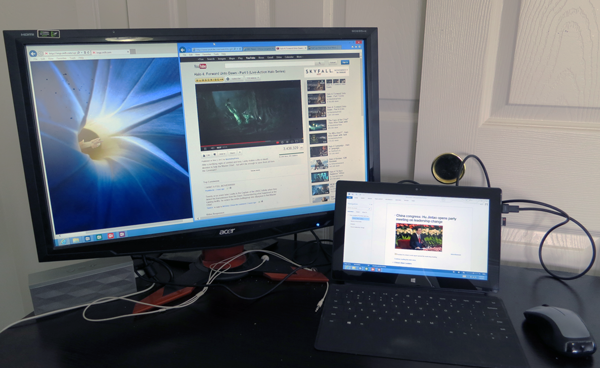Microsoft Surface Review, Part 2: Battery Life, Multi-Monitor, And More
No More Cloning: The Surface Supports An Extended Display!
We've mentioned this on multiple occasions, but the reason we liked the Surface so much in Part 1 of our evaluation was that it bridged the space between tablets and notebooks, rather than simply going head-to-head with devices like the iPad and Nexus 7.
One thing you'll commonly see in our tablet reviews is complaints about multi-monitor support. You can hook Android- and iOS-based devices up to external displays, but they simply mirror whatever is up on the tablet's screen. What's the use in that? Giving presentations, perhaps. But we'd much rather see an option to extend the display for productivity-oriented purposes.
Asus' Transformers have those clever docking stations. But they're Android-based, so they can't really be the notebook replacements we'd want. Samsung's Chromebox? Same thing. Although they're light-duty desktops able to support a pair of 30" screens, Chrome OS limits you to mirrored screens.
Microsoft's Surface fixes that maddening limitation by giving you the flexibility to either clone your desktop (yawn) or extend it (yay). In fact, once you plug a monitor into the tablet's microHDMI port, you have all of the options available on a desktop. In reality, there's only so much you can do on the Surface's 10.6" screen. But the addition of a second monitor opens the door to much more efficient multitasking. If you want three instances of IE10, Word, Skype, and PowerPoint all open at the same time, you can do that.
Of course, any trouble we caused by deliberately bogging down performance on the previous page gets exacerbated. Resizing frames and scrolling down a YouTube page are both tasks that suddenly start stuttering.
This seems to be a case where Microsoft is enabling so much functionality on its ARM-optimized operating system that today's SoCs are simply sagging under the load. Don't get us wrong. We like this. Hardware will continue to evolve. And even if Nvidia's Tegra 3 doesn't always serve up the smooth performance we expect in a desktop environment, we'd rather have the freedom to open multiple applications on-screen at the same time or extend out to a second panel.
Get Tom's Hardware's best news and in-depth reviews, straight to your inbox.
Current page: No More Cloning: The Surface Supports An Extended Display!
Prev Page Windows RT And Office: Fully-Featured, To A Fault? Next Page Is The Surface Any Good For Gaming? First, We Need Apps-
mayankleoboy1 Tegra3 is the biggest weakness in Surface. This SoC is already outdated.Reply
I wouldnt buy a device today which i know is going to be upgraded in a few months with atleast a better SoC, and probably a better display. -
tedx "Windows Internet Explorer (Not Responding)"Reply
Its comforting to see that not everything has changed with Windows RT. -
apache_lives Already have an ASUS Windows 8 RT tablet for the mrs -- she loves this thing, and from the lounge if my media center decides to play up i can use the tablet to remote desktop inReply
The ASUS also claims up to 16 hours battery life for theirs (im thinking less but still amazing if its 12+).
These things simply WORK -
kyuuketsuki apache_livesThe ASUS also claims up to 16 hours battery life for theirs (im thinking less but still amazing if its 12+).I'm assuming that's with the keyboard dock.Reply -
apache_lives KyuuketsukiI'm assuming that's with the keyboard dock.Reply
That is correct, but for documents and on the run its not a bad thing at all. -
besterino (Even though) being an hardware (PC) enthusiast I have bought the Surface (64GB, touch and type cover) for my wife and both she and I are seriously impressed.Reply
For her it is simply perfect: she can do with it all she would do with an ipad (she's not much of a gamer though) AND it actually replaces her desktop-PC... she's using office without macros and addins so the RT-Office is "good enough". She just plugs in an extra monitor and USB hub (for full-size keyboard and mouse), and she is all set for productivity. We did not experience any hardware limitation related issues (obviously office doesn't start as fast as it does on a x86 PC with SSD).
Based on our experience with the Surface RT I will definitely buy a Surface Pro for myself (I need Office with macros and addins for work) and hopefully finally have a PC that works both as a productivity tool as well as entertainment gadget. Yay! And *poof*, there goes the business notebook...
Too bad I will still need my desktop gaming rig (HD 4000 still not powerful "enough")... -
monsta The Asus Vivo Tab is much better than Microsoft's own version of surface, the display is much brighter, the keyboard dock has a battery, usb and SD card inputs. The battery life is amazing.Reply -
andrewcarr I hate when I'm looking at a computer screen and from that trying to see which picture is better of another computer screen. There seems a flaw in this logic.Reply



